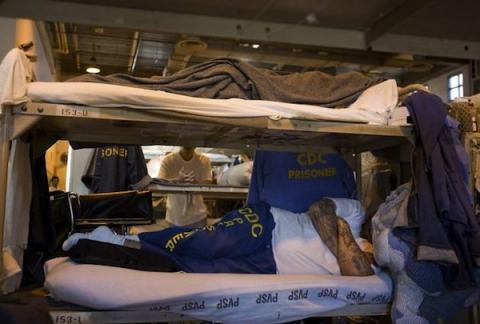Further disputes over prison reduction efforts in California have been raised over the potential health risks tied to an airborne fungus. In a recent court filing, Governor Jerry Brown’s administration objected to moving forward with an order that would remove more than 3,000 inmates from two prisons where this pathogen is being linked to three-dozen deaths and hundreds of hospitalizations.
Last week, J. Clark Kelso, the federal receiver, said more black, Filipino, and medically at-risk inmates have contracted valley fever at the Avenal and Pleasant Valley state prisons. In response to the growing health risks, he ordered the state to exclude these inmates from the prisons.
Essentially, this would mean approximately 40 percent of the prison population of both prisons. Swapping thousands of at-risk inmates with prisoners who would be less likely to contract valley fever would prove to be a major challenge for California officials.
Brown’s administration said U.S. District Judge Thelton Henderson (San Francisco) should wait for recommendations from the Centers for Disease Control and Prevention (CDC) and the National Institute of Occupational Safety and Health before enforcing Kelso’s order.
The Department of Corrections and Rehabilitation has taken steps to control the spread of dust during prison construction to reduce the spread of valley fever and other illnesses that can be contracted through airborne pathogens. These efforts include giving surgical masks to inmates and prison employees, as well as distributing educational material.
State officials have been accused of knowing about the health problems since 2006, but have not taken the measures necessary to appropriately deal with the issue. However, corrections department spokeswoman Deborah Hoffman denied these accusations in a statement, saying officials have “taken numerous steps” to combat the problem.
A federal court order requiring California to reduce its prison population by an additional 9,000 inmates by the end of 2012 has continuously been at the center of debate and contention in the state. This dispute is just the latest legal challenge from Brown and his administration.
The governor promised to appeal the order to the U.S. Supreme Court, which may prove to be a fruitless endeavor since the high court already sided with the decision in May 2011. Brown said he would comply with the high court’s decision even if it meant cutting funding for other programs to increase funding for the prison system.
"If the Supreme Court says, `No, you have to spend $20,000 a prisoner,' well, that's what we'll do," Brown said. "We'll cut whatever we have to cut and we'll just spend more and more money. But, I believe that to go from $7,000 to $15,000 to get to all the things we've done should be looked at fairly and honestly."
Judge Henderson has agreed to hear arguments on Kelso's order and has scheduled a hearing for June 17.
Photo Credit: Heidi Schumann / New York Times
